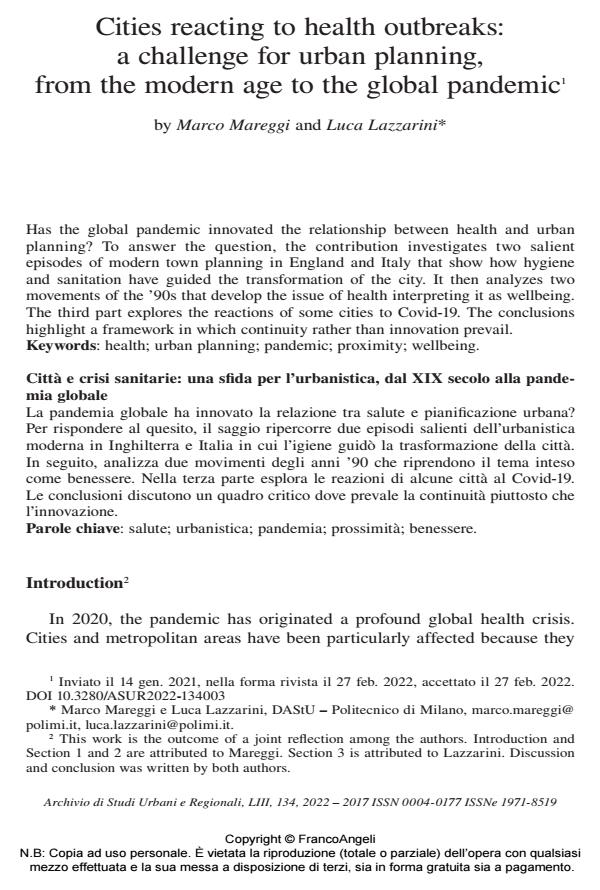Cities reacting to health outbreaks: a challenge for urban planning, from the modern age to the global pandemic1
Journal title ARCHIVIO DI STUDI URBANI E REGIONALI
Author/s Marco Mareggi, Luca Lazzarini
Publishing Year 2022 Issue 2022/134
Language English Pages 22 P. 52-73 File size 146 KB
DOI 10.3280/ASUR2022-134003
DOI is like a bar code for intellectual property: to have more infomation
click here
Below, you can see the article first page
If you want to buy this article in PDF format, you can do it, following the instructions to buy download credits

FrancoAngeli is member of Publishers International Linking Association, Inc (PILA), a not-for-profit association which run the CrossRef service enabling links to and from online scholarly content.
Has the global pandemic innovated the relationship between health and urban planning? To answer the question, the contribution investigates two salient episodes of modern town planning in England and Italy that show how hygiene and sanitation have guided the transformation of the city. It then analyzes two movements of the ’90s that develop the issue of health interpreting it as wellbeing. The third part explores the reactions of some cities to Covid-19. The conclusions highlight a framework in which continuity rather than innovation prevail.
Keywords: health; urban planning; pandemic; proximity; wellbeing.
Marco Mareggi, Luca Lazzarini, Cities reacting to health outbreaks: a challenge for urban planning, from the modern age to the global pandemic1 in "ARCHIVIO DI STUDI URBANI E REGIONALI" 134/2022, pp 52-73, DOI: 10.3280/ASUR2022-134003